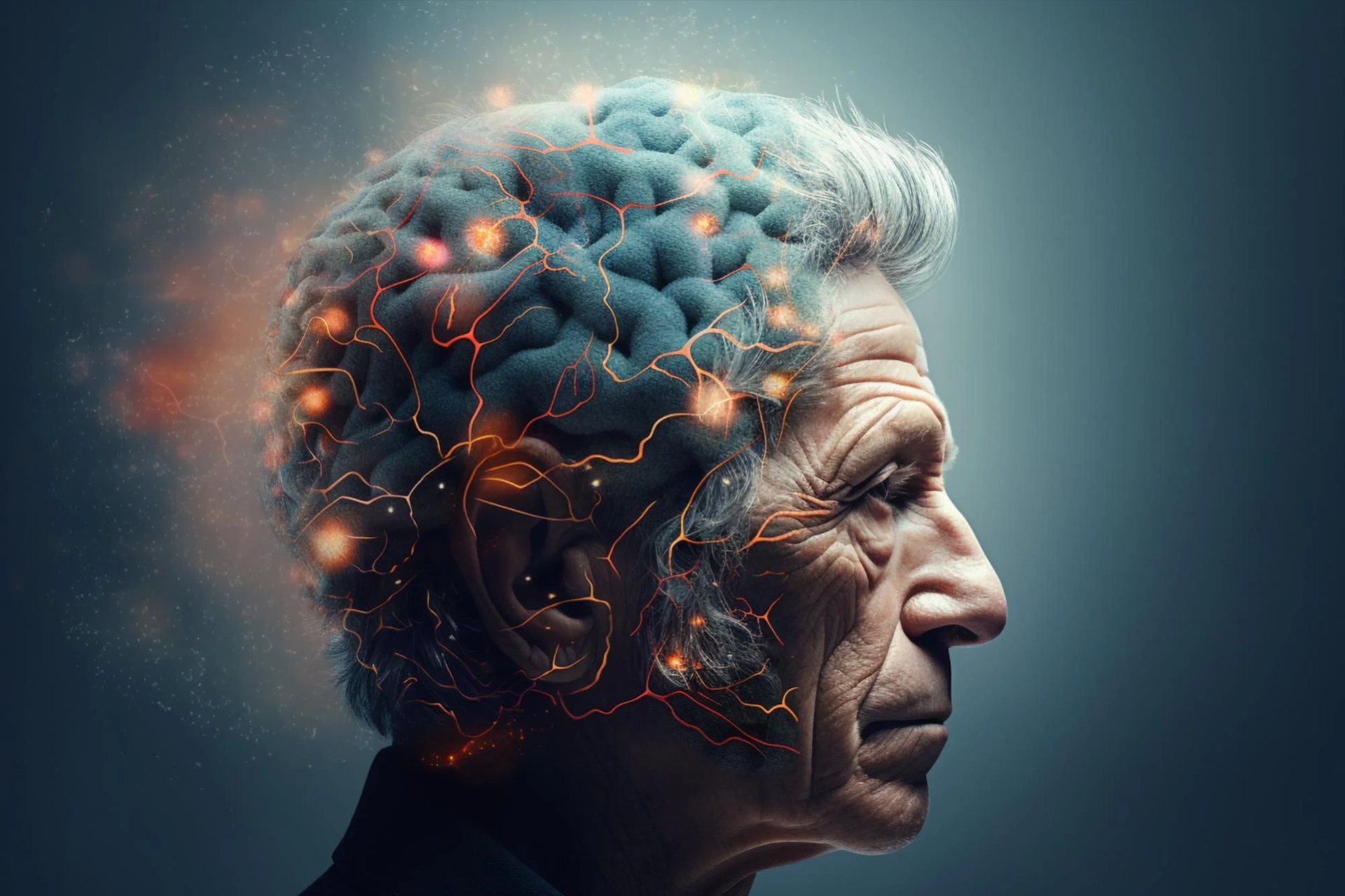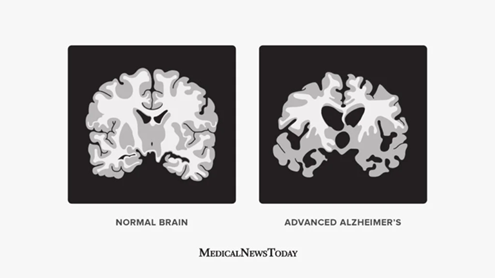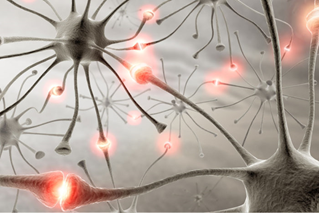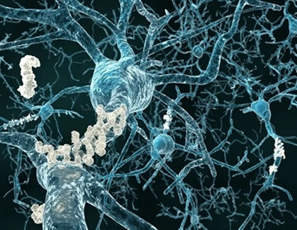How can neuroplasticity, the brain's ability to reorganise and form new neural connections, play a role in maintaining cognitive function and delaying neurodegenerative diseases, such as Alzheimer's Disease?
Zara Qaderi • 2024-05-22
“The ability of the brain to change- to adapt based on the environment, stimuli or experiences- is broadly termed as neuroplasticity,’ says Mayo Clinic expert Prashanthi Vemuri, Ph.D., who researches the brain and neurodegenerative disorders.
Neuroplasticity and brain health: How can neuroplasticity, the brain's ability to reorganise and form new neural connections, play a role in maintaining cognitive function and delaying neurodegenerative diseases, such as Alzheimer's Disease? Zara Qaderi
“The ability of the brain to change- to adapt based on the environment, stimuli or experiences- is broadly termed as neuroplasticity,’ says Mayo Clinic expert Prashanthi Vemuri, Ph.D., who researches the brain and neurodegenerative disorders. Within your brain, you have an extensive network of neural connections. These neural connections help to support our motor, sensory and cognitive skills that all work together to regulate our emotions. These connections are summed up to be cells essentially talking to one another by sending chemicals- called neurotransmitters- which diffuse across the gaps of these neurons, known as synapses. These networks of neurons change continuously, it is removed if it is not used enough, but it is often added to, to develop upon existing connections or even create new ones such as learning a new memory or a recent skill. Through neuroplasticity, the brain can rewire its connections and rearrange both structure and functions in essential activities such as forming memories, learning, and developing- therefore making it vital for basic human function. Neuroplasticity holds huge implications for stroke rehabilitation and recovery from brain damage, there has been recent interest in the way we can use these mechanisms to delay the rate at which dementia, Alzheimer’s in particular, can be deferred. Estimated that one new person is diagnosed with dementia every 7 seconds around the world, advancements with further research in the positive effects of healthy neuroplasticity in the brain upon Alzheimer’s disease may help with the ability to delay the number of those diagnosed.
The brain with advanced Alzheimer’s disease is shown to have a significant decrease in volume, compared to a normal brain.
Neurodegenerative diseases are a group of diseases caused by the gradual damage of the nervous system, this umbrella term covers those the likes of Alzheimer’s disease, which progressively worsens over time, particularly during later periods in Those who suffer from Alzheimer’s express a lower degree of plasticity, and up to 10 years before it- this primarily stems from the fact that this loss is accelerated dramatically as the concentrations of the neurotransmitters are decreased, and damages the connections involved with memory, which impact the hippocampus and the entorhinal cortex. This neuronal cell death, known as necroptosis, was discovered to be caused by the exposure of a protein called amyloid, creating plaques that threaten the efficiency of these neurone connections, during a research study UK Dementia Research Institute at UCL, led by Professor Strooper, 2023.
Neuroplasticity plays a crucial role in maintaining cognitive function and shows hope in preventing neurodegenerative diseases, like Alzheimer's diseases. As we get older, the health of our neurones gradually begins to deteriorate, therefore preserving the health of our neuroplasticity poses a salubrious climate which harbours the chance to delay the rate at which the brain’s cognitive functions subside. As Alzheimer’s disease is a progressive disorder that increasingly destroys memory and thinking skills, this disease begins to progress over time, it takes away the ability to carry out simple tasks. Alzheimer’s disease is split into two categories, early-onset and late-onset Alzheimer’s disease. Early onset Alzheimer’s presents their symptoms as early as their 40’s and 50’s- however, it is not impossible for people to get diagnosed in their 20’s and 30’s, particularly in those who carry one of three genetic mutations which help to predict early onset Alzheimer’s. These three genes are APP, PSEN1 and PSEN2, which can be discovered through genetic testing. Although affecting 7.5% (70,800 adults) of the 900,000 people in the UK’s population who suffer from Alzheimer’s disease, many don’t experience the classic hallmark memory loss symptoms but rather more unique ones such as having “tunnel vision” in the initial stages/ Alongside impaired depth perception, inability to recognise other people’s faces, impaired speech or difficulty with coming up with words in a conversation, as well as being the more progressive diseases to its late-onset counterpart. In contrast, late-onset Alzheimer’s disease presents its symptoms through a gradual decline in episodic memory, which are everyday events that can be explicitly stated or conjured- alongside being confused in unfamiliar environments, having increased difficulties with activities that require organisation and planning, and asking questions repetitively.
Using our existing knowledge of neuroplasticity, perhaps we could use it to preserve neuronal health and potentially build upon it to combat the rate at which Alzheimer’s progresses over age. It is said that learning a new language can increase the grey matter density and neuroplasticity, which is a beneficial thing for us as grey matter enables individuals to control movement, memory and emotions. An intensive study discovered that after three months of studying a new topic, 14 adult interpreters were found to have a larger increase in grey matter and hippocampal volume. The hippocampus plays a large role in long-term memory recall, which allows people further to rewind the effects of a degenerative neuronal cell death as being bilingual provides protective benefits, thus slowing down the rate at which Alzheimer’s can progress as it counters neurone degradation through the enhancement and preservation of neuronal plasticity.
In addition to this, it is known that exercise is beneficial for the body. The effects it has on cognitive function are just as comparable to the physical effects. It not only strengthens the muscles, but it also strengthens the brain, thus leading to improvements in cognitive abilities such as memory. This is because the increased blood flow from aerobic exercise increases cell growth in the brain. In another study, they found that the risk of Alzheimer’s disease can be lowered by 28% to 45% (Smith, 2009), with specific exercise programs that were supervised, which led to an increase in attention, executive function and memory improvement. Since exercise releases hormones that curate the perfect environment for brain cell growth, this enhances plasticity as it stimulates new connections between cells in numerous vital cortical areas of the brain. This helps to have clearer memories and better cognitive function, which reduces the chance of Alzheimer’s developing.
Artistic pursuits may also aid the brain in creating new pathways between the neurones and strengthen the existing connections, and therefore impact human cognitive ability. To improve cognitive function, the brain must be able to change structure and function in a manner that is sustained in response to external stimulation- maintaining its plasticity. Art positively impacts the brain, just like exercise, but through an alternative approach. Art helps to enhance one’s focus as it demands concentration in the present moment, which helps to reduce anxiety levels and depression. This is highly beneficial to the brain and to reduce Alzheimer’s disease, as this allows the stress levels to be reduced- as stress induces the hormone cortisol, which can help kill brain cells if a person experiences a state of acute and chronic stress.
This stressed state reduces a person’s social skills and holds the ability to even minimize the brains area responsible for memory and learning. Cortisol also blocks the neurotransmitter function, which leads to the injury of brain cells and affects short-term memory loss, therefore impacting long-term memory loss. Both acute and chronic stress increase the production of the protein beta-amyloid, which is a primary factor for Alzheimer’s disease. Engaging in art helps to regulate blood pressure, which is another factor that aids in the advancement of Alzheimer’s disease as it increases dementia. By lowering stress and allowing the brain to rest through mental health breaks, art helps to lower high blood pressure.
Beta- amyloid plaque surrounding neurones.
This is significant because hypertension and high blood pressure can damage small blood vessels within the brain, which affects the parts of the brain which is responsible for thinking and memory. This is why art is a good way to decompress and take one’s mind off things, proving it effective. Therefore, enhancing brain plasticity widens the capacity of the brain’s nerve cells to change and adapt in response to intrinsic and extrinsic factors, having an ultimately beneficial effect across our lifespan, which helps to prolong and improve the quality of life.
Neuroplasticity promises hope in helping to delay the rate at which neurodegenerative diseases progress. Exercise, art, and learning new languages are only a handful of activities that help to improve brain plasticity- where its benefits counter the decline that Alzheimer’s disease brings along. Neuroplasticity is vital to preserve memory and cognitive function, the cost of dementia stands at £34.7 billion yearly and £32,500 per person. The current studies hold promise in maintaining cognitive function and prolonging the health of the brain, further research in neuroplasticity-based interventions can provide even more solutions to help reduce the occurrence of neurodegenerative diseases, thus promising not only economic benefits to the NHS and the nation, but also emotionally for those who suffer from it and the families of the patients. This is why aiming neuroplasticity poses itself to be a strong contender to help delay the development of Alzheimer’s disease.
References
Park, D.C. and Bischof, G.N. (2013). The aging mind: neuroplasticity in response to cognitive training. Dialogues in clinical neuroscience, [online] 15(1), pp.109–19. Available at: https://www.ncbi.nlm.nih.gov/pmc/articles/PMC3622463/.
Cleveland Clinic (2023). Neurodegenerative diseases. [online] Cleveland Clinic. Available at: https://my.clevelandclinic.org/health/diseases/24976-neurodegenerative-diseases.
National Institute on Aging (2024). What happens to the brain in Alzheimer’s Disease? [online] National Institute on Aging. Available at: https://www.nia.nih.gov/health/alzheimers-causes-and-risk-factors/what-happens-brain-alzheimers-disease#:~:text=Alzheimer.
UCL (2023). Scientists discover how neurons die in Alzheimer’s disease. [online] UCL News. Available at: https://www.ucl.ac.uk/news/2023/sep/scientists-discover-how-neurons-die-alzheimers
Bruer, J. (n.d.). NEURAL CONNECTIONS: Some You Use, Some You Lose. [online] Available at: https://www.oecd.org/education/ceri/31709587.pdf.
perry, elizabeth (2021). What is Neuroplasticity and Why is It Important? [online] www.betterup.com. Available at: https://www.betterup.com/blog/what-is-neuroplasticity#:~:text=Through%20neuroplasticity%2C%20the%20brain%20is.
Hill, N.L., Kolanowski, A.M. and Gill, D.J. (2011). Plasticity in Early Alzheimer’s Disease: An Opportunity for Intervention. Topics in geriatric rehabilitation, [online] 27(4), pp.257–267. Available at: https://www.ncbi.nlm.nih.gov/pmc/articles/PMC3419487/.
NHS (2023). Symptoms of dementia. [online] nhs.uk. Available at: https://www.nhs.uk/conditions/dementia/symptoms-and-diagnosis/symptoms/.
medicine.iu.edu. (n.d.). What is early-onset Alzheimer’s?| IU School of Medicine. [online] Available at: https://medicine.iu.edu/expertise/alzheimers/research/translational/early-onset/what-is-early-onset-alzheimers#:~:text=It%20is%20believed%20that%20early.
Isik, A.T. (2010). Late onset Alzheimer’s disease in older people. Clinical Interventions in Aging, [online] 5, p.307. doi:https://doi.org/10.2147/cia.s11718.
Raypole, C. (2020). How to Rewire Your Brain: 6 Neuroplasticity Exercises. [online] Healthline. Available at: https://www.healthline.com/health/rewiring-your-brain.
Alzheimer’s Research UK. (n.d.). Speaking a second language shows benefits in Alzheimer’s. [online] Available at: https://www.alzheimersresearchuk.org/news/speaking-second-language-shows-benefits-alzheimers/#:~:text=Previous%20studies%20have%20shown%20that.
National Institute on Aging. (2023). Alzheimer’s Disease Genetics Fact Sheet. [online] Available at: https://www.nia.nih.gov/health/genetics-and-family-history/alzheimers-disease-genetics-fact-sheet#:~:text=In%20some%20cases%2C%20if%20a.
Armstrong, G.-F.G.B. (2018). How Exercise Affects Your Brain. [online] Scientific American. Available at: https://www.scientificamerican.com/article/how-exercise-affects-your-brain/#:~:text=It%20increases%20heart%20rate%2C%20which.
Meng, Q., Lin, M.-S. and Tzeng, I-Shiang. (2020). Relationship between exercise and alzheimer’s disease: A narrative literature review. Frontiers in Neuroscience, [online] 14(131). doi:https://doi.org/10.3389/fnins.2020.00131.
Shelley (2019). Can Engaging in Art Projects Prevent Alzheimer’s? - HSC. [online] Heritage Senior Communities. Available at: https://www.heritageseniorcommunities.com/can-engaging-in-art-projects-prevent-alzheimers/#:~:text=Strengthens%20the%20brain. [Accessed 12 May 2024].
News-Medical.net. (2018). Stress and Alzheimer’s Disease. [online] Available at: https://www.news-medical.net/health/Stress-and-Alzheimers-Disease.aspx#:~:text=Stress%20has%20been%20shown%20to.
Alzheimer’s Research & Prevention Foundation. (n.d.). Prevent Alzheimer’s Disease - Pillar 2: Stress Management. [online] Available at: https://alzheimersprevention.org/4-pillars-of-prevention/pillar-2-stress-management/#:~:text=It%20blocks%20your%20neurotransmitter%20function [Accessed 12 May 2024].
www.hopkinsmedicine.org. (2022). Blood Pressure and Alzheimer’s Risk: What’s the Connection? [online] Available at: https://www.hopkinsmedicine.org/health/conditions-and-diseases/alzheimers-disease/blood-pressure-and-alzheimers-risk-whats-the-connection#:~:text=Blood%20Pressure%20Link-.
Dementia UK (2022). 70,800 adults are affected by young onset dementia. [online] Dementia UK. Available at: https://www.dementiauk.org/news/new-figures-show-70800-uk-adults-are-affected-by-young-onset-dementia/.
See More Posts
Copyright © 2021 Govest, Inc. All rights reserved.





